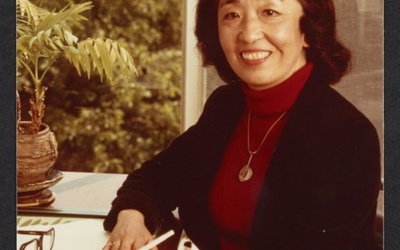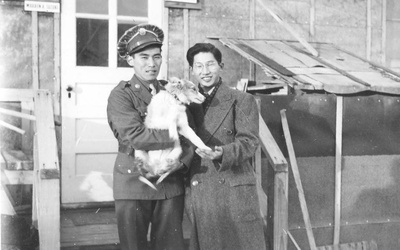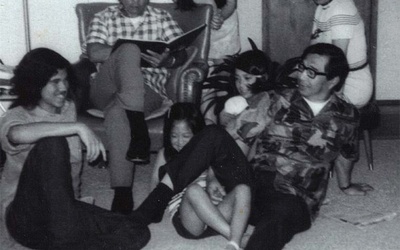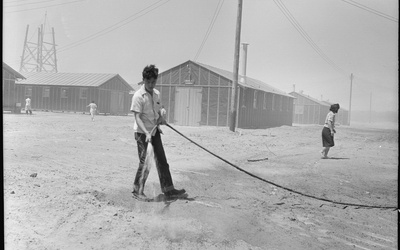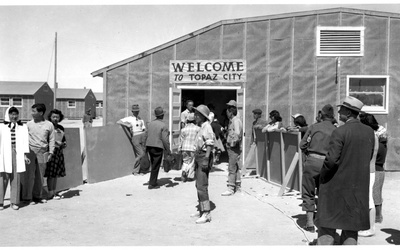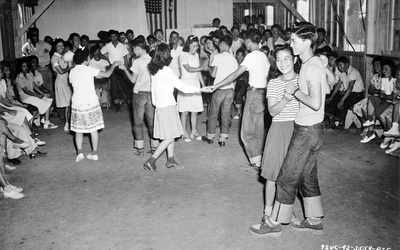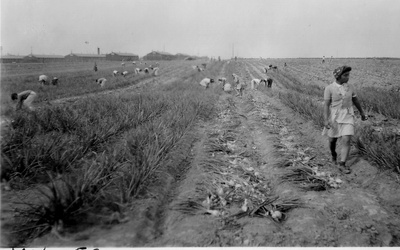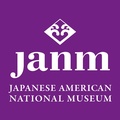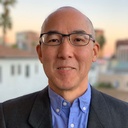
Brian Niiya
Brian Niiya is a public historian specializing in Japanese American history. Currently the content director for Densho and editor of the online Densho Encyclopedia, he has also held various positions with the UCLA Asian American Studies Center, the Japanese American National Museum, and the Japanese Cultural Center of Hawai'i that have involved managing collections, curating exhibitions, and developing public programs, and producing videos, books, and websites. His writings have been published in a wide range of academic, popular, and web-based publications, and he is frequently asked to give presentations or interviews on the forced removal and incarceration of Japanese Americans during World War II. A "Spoiled Sansei" born and raised in Los Angeles to Nisei parents from Hawai'i, he lived in Hawai'i for over twenty years before returning to Los Angeles in 2017 where he is currently based.
Updated May 2020
Stories from This Author
African American images on a Nikkei Canvas: Black Characters in Japanese American Literature - Part 1
Jan. 23, 2022 • Greg Robinson , Brian Niiya
It is a commonplace that the presence and contributions of racial minorities have been too long and thoroughly erased from the writing of America’s history. Yet, as the eminent historian Arthur Schlesinger, Jr. once observed, if racial conflict has remained excluded from the nation’s consciousness, as expressed by the writing of history, then the repressed has returned in its unconscious, as represented by literature—classic American works by Twain, Melville and others are awash in feelings, fantasies and fears over racial …
Yoshiko Uchida's Remarkable—and Underappreciated—Literary Career
Dec. 3, 2021 • Brian Niiya
I have long been a fan of Yoshiko Uchida, a Berkeley-based writer best known for her children’s and young adult books about the World War II forced removal and incarceration. But her long writing career included much more: pioneering children’s books set in Japan or in Japanese American communities published just a few years after the end of the war, a widely-cited memoir and adult novel, and many more articles and short stories. What would have been Uchida’s 100th birthday …
Pets in Camp: Dogs, Cats, Canaries, and “Even a Badger”
Sept. 30, 2020 • Brian Niiya
It is one of the most poignant—and often told—stories of the WWII roundup and incarceration of Japanese Americans: the wrenching decision that had to be made about a beloved pet as families were being forced to leave their homes in the spring of 1942. Unable to take the pet with them, the family has to leave it behind in the care of friends, neighbors, or strangers. In most cases, the family never sees the pet again. You come across many …
In Memoriam: A Tribute to Lane Ryo Hirabayashi
Aug. 27, 2020 • Brian Niiya
Lane Ryo Hirabayashi was an innovator in the field of Asian American Studies, a historian and storyteller who dedicated his life to deepening public knowledge of Japanese American WWII incarceration, and a mentor to generations of students. In this touching tribute, Densho Content Director (and longtime friend) Brian Niiya describes Lane’s incredible life and impact. Even though we all knew it was imminent, I was still shocked and saddened to learn of the passing of Lane Ryo Hirabayashi, a good …
Ten Things That Made Poston Concentration Camp Unique
Feb. 7, 2020 • Brian Niiya , Denshō
The Colorado River “Relocation Center”—more commonly referred to as Poston—was located in the Arizona desert a few miles from the California border. The largest and most populous of the War Relocation Authority (WRA) administered concentration camps (with the exception of post-segregation Tule Lake) with a peak population of nearly 18,000, Poston was unique among WRA camps in a number of ways. First, it was built on the Colorado River Indian Reservation and jointly managed by the Office of Indian Affairs …
Ten Little Known Stories About Topaz Concentration Camp - Part 2
Oct. 31, 2019 • Brian Niiya , Denshō
Read Part 1 >> HOSTILE RECEPTION FOR OUTSIDE FARM WORKERS As at many camps, inmates were encouraged to go out on short term leave during the harvest season to do agricultural work in states like Utah, Idaho, and Colorado. Because so many workers were moving to the coast to take relatively well-paying war industry jobs, there were serious shortages of agricultural workers, leading to many farmers attempting to recruit incarcerated Japanese Americans. Thousands of Japanese Americans did do this, particularly …
Ten Little Known Stories About Topaz Concentration Camp - Part 1
Oct. 30, 2019 • Brian Niiya , Denshō
The “Central Utah Relocation Center”—more popularly known as Topaz—was located at a dusty site in the Sevier Desert and had one of the most urban and most homogeneous populations of the camps, with nearly its entire inmate population coming from the San Francisco Bay Area. Topaz is perhaps best known as the site of the fatal shooting of an inmate by an overzealous camp sentry in April 1943 and for its art school, which included a faculty roster of notable …
Thieving Guards, Mass Food Poisoning, and Other Facts of Life in Fresno Assembly Center
Sept. 20, 2019 • Brian Niiya , Denshō
The Fresno Assembly Center* (FAC) opened on May 6, 1942 and held a total of 5,344 Japanese Americans forcibly removed from the Fresno and Sacramento areas. One of fifteen dedicated short-term detention camps opened in the spring of 1942, the facility closed six months later when the population was transferred to a more permanent prison camp in Arkansas. Though surrounded by barbed wire fences and guarded by military police—all the while facing oppressive heat in a nearly shadeless camp and …
10 Little Known Facts of Life at Minidoka
Sept. 2, 2019 • Brian Niiya , Denshō
Located in Southern Idaho, Minidoka concentration camp opened on August 10, 1942 and held some 13,000 Japanese Americans during World War II. The incarcerees — most of whom hailed from Washington and Oregon — were accustomed to relatively mild climates and struggled to adapt to Minidoka’s extreme temperatures and relentless dust storms. They also endured lesser-known travails. Read on for untold stories of life at Minidoka. 1. “A Source of Unpleasantness and Inconvenience” Due to a parts shortage, the …
10 Little-Known Stories About Rohwer Concentration Camp
May 27, 2019 • Brian Niiya , Denshō
If there’s one true thing about studying history, it’s that there’s always more to learn. Less (in)famous than sites like Manzanar and Tule Lake, Rohwer was one of two WRA concentration camps located in Arkansas, where inmates were exposed to the unique climate and racial politics of the South, and had regular interactions with Nisei soldiers training at nearby military facilities. This year’s Rohwer Pilgrimage took place on April 11, and Densho Content Director Brian Niiya collected ten little-known facts …


